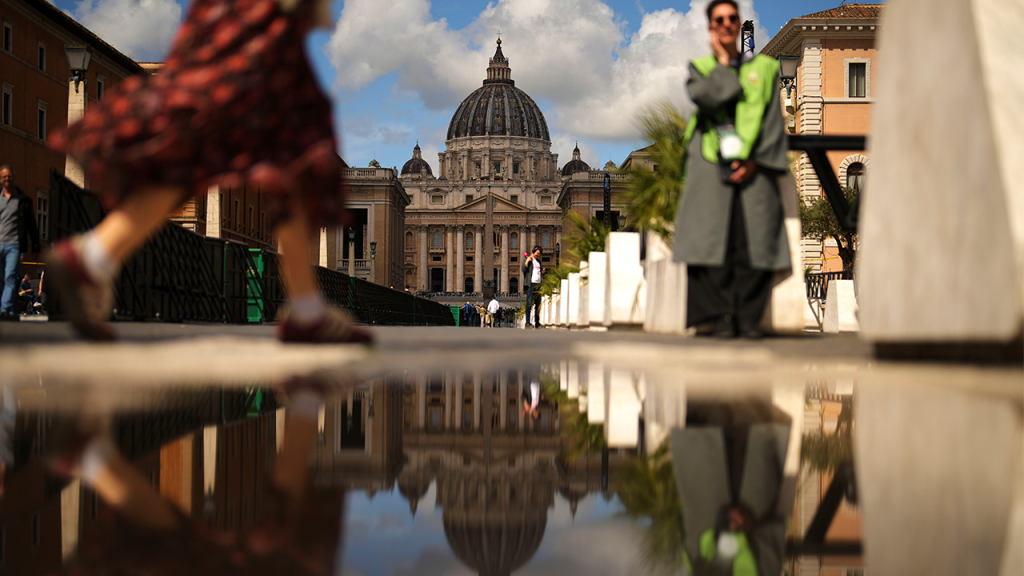On May 7, 2025, the sacred halls of St. Peter’s Basilica in Rome were filled with solemnity as cardinals gathered for a final Mass ahead of the conclave to elect the successor to the late Pope Francis. The Mass marked not only a moment of mourning but also a prelude to a pivotal process that will shape the future of the Catholic Church. With 133 cardinals from around the world prepared to enter a period of isolation, they will work diligently to elect the next pope amidst calls for unity and wisdom in their decision-making.
| Article Subheadings |
|---|
| 1) Final Mass and Its Significance |
| 2) The Process of Election |
| 3) Diverse Representation Among Cardinals |
| 4) Challenges of Consensus |
| 5) The Future of the Catholic Church |
Final Mass and Its Significance
The gathering of cardinals for a final Mass represents a moment steeped in tradition and spirituality. Held within the iconic ambiance of St. Peter’s Basilica, the Mass was presided over by Giovanni Battista Re, the dean of the College of Cardinals. This ceremonial act serves not only as a tribute to the legacy of Pope Francis, who passed away last month, but also as a unifying event for the cardinals who will soon deliberate on the crucial matter of electing a new pope. The atmosphere was filled with prayer and reflection, as many contemplated the weight of the decisions ahead.
The Process of Election
Following the final Mass, the cardinals prepared to enter the Sistine Chapel for the conclave. This private election process is characterized by its intense confidentiality and solemnity. To maintain secrecy, cardinals are required to surrender their cellphones, and the airwaves surrounding the Vatican are jammed to prevent outside communication. The voting system operates on a two-thirds majority rule, requiring the support of 89 out of 133 cardinals to elect the next pope. This voting method fosters a deliberative approach, compelling the cardinals to engage deeply with one another and reflect on their shared responsibilities.
Diverse Representation Among Cardinals
One notable aspect of this conclave is the diversity among the cardinals themselves. Out of the 133 cardinals, a significant number were appointed by Pope Francis, who made a conscious effort to uplift voices from across the globe, including countries not previously represented in the hierarchy. With cardinals hailing from varied nations such as Mongolia, Sweden, and Tonga, this conclave offers a unique opportunity to address a broader spectrum of Catholic perspectives and cultural contexts. This representation will undoubtedly impact the discussions and priorities as they work toward selecting a new leader for the Church.
Challenges of Consensus
As cardinals gather for their crucial deliberations, one emerging concern is the potential difficulty in achieving consensus. Many cardinals expressed that they had not met their fellow members until the recent days leading to the conclave. There is an underlying tension between the desire for expediency in electing a new pope and the need for thorough dialogue and understanding among the electors. Consequently, some cardinals, including Cardinal Mario Zenari, highlighted the importance of patience, indicating that it may take time for the group to reach the two-thirds majority required to seal the election. This challenge of consensus could extend the duration of the conclave, though its outcome will set a crucial precedent for the Church’s future.
The Future of the Catholic Church
With the passing of Pope Francis, the Catholic Church finds itself at a pivotal juncture. The elected pope will inherit a legacy marked by calls for reform, social justice, and an increasing emphasis on inclusiveness. Many faithful Catholics are hopeful that the next leader will continue to uphold the values promoted by Pope Francis, addressing global issues such as poverty, climate change, and interfaith dialogue. The expectations are high, and the decisions made by the cardinals in the coming days will have lasting implications not only for the Church but for millions of believers worldwide. The new pope’s approach will likely echo the collective conscience of the cardinals and the larger Church community.
| No. | Key Points |
|---|---|
| 1 | The final Mass served as a spiritual unification for the cardinals ahead of the conclave. |
| 2 | The conclave will take place in the Sistine Chapel, emphasizing secrecy and deliberation. |
| 3 | Diversity among cardinals is expected to enhance discussions about a global Catholic perspective. |
| 4 | Consensus-building may pose a challenge due to unfamiliarity among many cardinals. |
| 5 | The future pope will carry forward the legacy of Pope Francis amid pressing global issues. |
Summary
As the cardinals commence their conclave, the outcome of this election is poised to influence the Catholic Church’s moral and ethical directions for years to come. The blend of diverse backgrounds among the cardinals, coupled with the gravity of the new leader’s responsibilities, is crucial in navigating the Church through contemporary challenges. This moment serves as a reminder of the Church’s dynamic interplay between tradition and modernity.
Frequently Asked Questions
Question: What is the conclave process for electing a new pope?
The conclave is a private assembly of cardinals convened to elect a new pope, typically after the death or resignation of the sitting pope. It involves a series of votes requiring a two-thirds majority for a candidate to be elected.
Question: How do the cardinal appointments impact the election?
The appointments made by the previous pope significantly influence the conclave, as many newly appointed cardinals share similar theological perspectives and priorities, shaping the discourse during the election process.
Question: Why is diversity among cardinals important?
Diversity among cardinals allows for a richer dialogue and broader representation of the global Catholic community during the election, ensuring that different cultural and regional perspectives are considered in the decision-making process.


